
Review on 🔵 Anourney 20PCS Ice Blue T10 194 168 2825 W5W 3SMD LED Bulbs - Enhance Your Vehicle's Interior and Exterior Lighting! by William Mistretta

Previous failure modes, very common in small LED inserts.
First, I am an experienced and certified Electrical/Electronics/Data Systems Technician. I've used pretty much every LED replacement available for bulbs this size and literally 100% of them have died in a relatively short period of time. Time before thermal overload. Although LEDs consume significantly less electricity than a comparable incandescent lamp, the percentage of heat loss is very high. (This is true for all light sources, over 95% of the current drawn is wasted on heat, except for very complex solid state controlled LEDs or HIDs, but that's another story for another time). and built correctly and these are the only ones I've bought that actually have parallel load resistors. (You will have all resistors in series which will dissipate a lot of thermal energy, they are needed to reject current through the LED). Most SMD pads are engraved, but the manufacturer probably wanted to save 3 cents a piece and didn't. Use some small SMD resistors to properly distribute the load. In any case, due to heat dissipation in the LED itself OR in a resistor on top of the module, a lot of heat is dissipated, not to mention there is no other way to do it than by conducting it into the case and wiring harness (a very small percentage). This is somewhat understandable given the size limitations of this particular app. To be honest, they're available for 50 cents each. I expect to use about half of that in a year (using 5 outlets, two ultra low duty indoor downlights, three high duty cycle outdoor lights for two position lights and a panel light; all outlets should have adequate passive cooling this) Remember, heat kills LEDs. The internal "wear and tear" of the diode is, at least with today's modern LEDs, almost off the scale in the lower range. Resistances are about the same, but excessive heat will eventually burn and crack epoxy substrates, even lose solder joints when low temperature soldering or improper high temperature soldering. Also, there is a small card in the packaging to indicate that they are polarity sensitive. This is incorrect for at least two reasons. First, the LED itself is a diode with a relatively high reverse voltage (much higher than what you would see in a working and properly configured 12V DC power supply). Second, the design uses a simple full-phase rectifier with four SMD diodes; You can even use this bulb on a low voltage AC power source. This is not a minus, this is good, in that they are protected from idiots. Let's come back to the problem of heat dissipation. Probably the only way to get a standard bulb big enough to stay cool is to move the solid state control off the board and down the wire. This is the way to go, but it's in the OEM configuration, while these devices are designed for plug-and-play conversion, replacing an incandescent light bulb with an unlimited power source. (A filament's resistance increases as it heats up, so it's a self-driven negative feedback circuit. LEDs don't work that way, they work much like a simple diode). I'll update this when I have enough data to determine the bounce rate (not the best sample size, but you can extrapolate a bit within reason). They're certainly bright enough, I'd even consider current limiting even more to exponentially increase lifespan.
- Decent Performance
- Appearance
New products
Comments (0)
Top products in 🚗 Car Bulbs
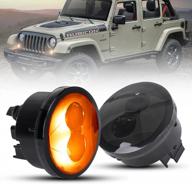
Front LED Turn Signal Light Compatible With 2007-2017 Jeep Wrangler JK | LITEWAY Fender Side Marker Parking Lights

50 Review
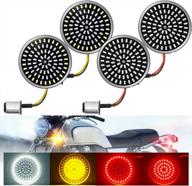
Revamp Your Motorbike With SUPAREE 1157 2'' Front Rear LED Turn Signals For Dyna Softail Touring Street Glide Road King 1997-2021

39 Review
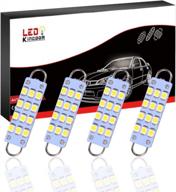
LEDKINGDOMUS 44Mm Festoon LED Bulb, Bright White Interior Light For Car Dome Map, 12 SMD 3528 Chips, Rigid Loop, Compatible With 561 562 567 564, Pack Of 4

36 Review
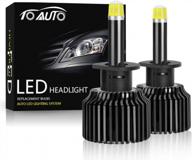
Upgrade Your Headlights With H1 LED Bulbs: 8 Sides CSP Chips, Super Bright White 6000K And 12000LM For High/Low Beam And Fog Lights - Get 360 Degree Lighting

40 Review
Another interesting products
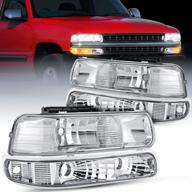
1999-2002 Chevy Silverado/Tahoe Headlight Assembly - 2 Year Warranty!

27 Review
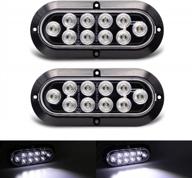
Pack Of 2 TMH 6 Inch Oval White LED Lights For Truck Trailer With Reverse Lamp, Turn Signal, Side Marker And Tail Functions - Surface Mount, Ideal For Trailers, Buses And Vehicles, 12V DC

25 Review
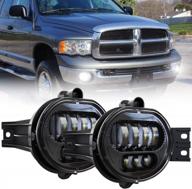
LED Fog Lights Passing Lamps For Dodge Ram 1500/2500/3500 Pickups 2002-2009 & Durango 2004-2006, Upgraded XPCTD Black Truck Fog Lights

38 Review
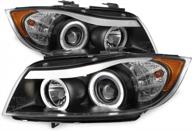
Black Bezel Halogen Type LED Halo Ring Eye Lid Projector Headlights For 2006-2008 BMW E90 3 Series 4 Door Sedan

32 Review

